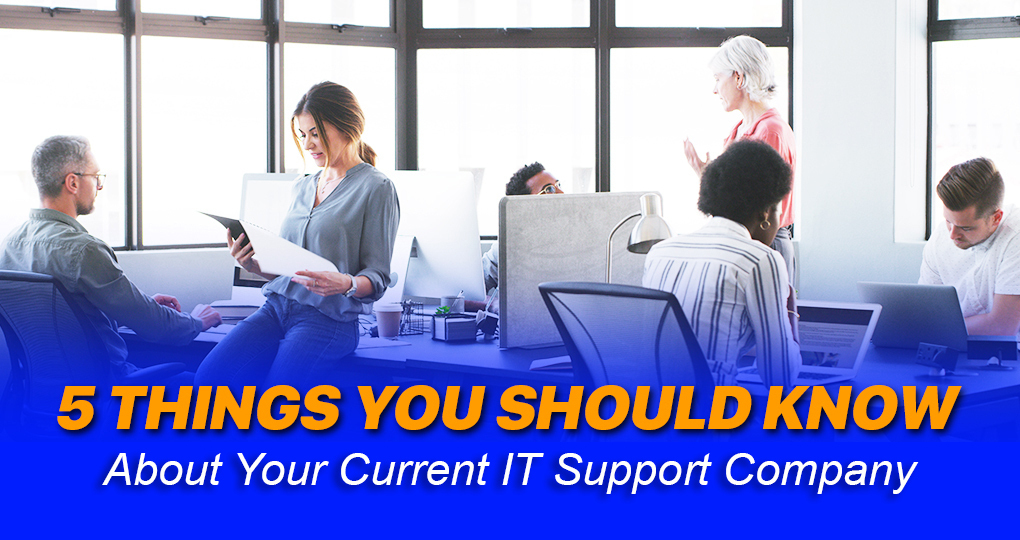Establishing a financial blueprint for the course of the new year is pivotal to fostering growth for your business. As you anticipate the resources necessary to navigate your business through 2024, it’s essential to craft a budget that not only addresses immediate needs but also scales with your aspirations.
With a notable uptick in IT spending anticipated, now is the opportune moment to harness technology to enhance your offerings and streamline operations. The investment in tech, particularly in generative AI, promises to revolutionize industry practices, delivering efficiency and innovative solutions.
Where Is Your Money Going To End Up?
In 2024, businesses are expected to face several areas of increased IT expenses and spending as technology continues to evolve rapidly. Staying competitive and secure means investing strategically in these key areas:
Cybersecurity
Cybersecurity remains a top concern for businesses as cyber threats become more sophisticated. To protect sensitive data and maintain customer trust, organizations will need to allocate more resources to cybersecurity.
This includes investing in advanced threat detection systems, security training for employees, and regular security audits. As the threat landscape evolves, cybersecurity budgets must keep pace to stay one step ahead of cybercriminals.
Cloud Services and Infrastructure
The cloud continues to be a game-changer for businesses, offering scalability, flexibility, and cost savings. However, as businesses rely more on cloud services for critical operations, expenses related to cloud infrastructure and services are expected to increase.
This includes costs associated with cloud storage, data transfer, and the adoption of cloud-native technologies. Investing in cloud management and optimization tools can help control these expenses.
Digital Transformation Initiatives
Digital transformation is no longer a luxury but a necessity for businesses looking to remain competitive. Investments in modernizing IT infrastructure, adopting emerging technologies like AI and IoT, and enhancing customer experiences will drive IT spending. While these initiatives can yield significant long-term benefits, they often require upfront investments that will impact IT budgets in 2024.
Remote Work Technology
The hybrid work model, where employees split their time between the office and remote locations, is here to stay. To support remote work effectively, businesses will need to invest in secure remote access solutions, collaboration tools, and cybersecurity measures tailored to remote environments. Ensuring a seamless and secure remote work experience for employees is a priority that will influence IT spending.
Compliance and Data Privacy
Data privacy regulations are becoming more stringent globally, and businesses must invest in compliance efforts to avoid costly fines and reputational damage. Compliance-related IT expenses may include data encryption, access control systems, and data management solutions that ensure compliance with regulations such as GDPR and CCPA. Failing to allocate resources for compliance can lead to unexpected financial penalties and legal consequences.
Top Considerations For Strategic Budgeting
When embarking on the journey of budget management for 2024, it’s crucial to start with a clear understanding of your business objectives for the coming year. Ask yourself:
- What are your growth targets?
- What new markets or products are you exploring?
Equally important is soliciting opinions from various departments within your organization. Collaboration among stakeholders ensures a holistic view of what’s needed and fosters alignment between technology investments and business objectives.
3 Best Practices For Better IT Budgeting
Make Sure Your IT Investments Support Your Business Goals
To optimize your IT budget, the first step is aligning your IT projects with your organization’s overarching goals. This entails a meticulous evaluation of each project to discern its contribution to your company’s broader objectives.
Begin by gaining a comprehensive understanding of your firm’s strategic goals for the upcoming year. What are your growth targets, and how can technology serve as a catalyst for their achievement? Addressing these queries facilitates the identification of pivotal IT projects crucial to your organization’s prosperity.
After pinpointing these critical projects, allocate your resources judiciously. Your budget should perpetually mirror your business priorities, necessitating potential resource reallocations from lower-priority endeavors to more pressing ones. Aligning your expenditures with your business objectives guarantees resource utilization that maximizes their impact.
For sustained alignment with business goals, consistent monitoring and evaluation of ongoing projects are essential. Given the fluidity of circumstances and the emergence of new opportunities, periodic adjustments become imperative. Routine progress assessments and priority reassessments empower you to make informed determinations concerning resource allocation.
Prioritizing and aligning IT projects with your business goals are quintessential strategies for optimizing your IT budget. This approach enables the concentration of investments on projects wielding the most profound influence while curbing extravagance on non-essential undertakings. This translates into heightened operational efficiency and sustainable growth over time.
Choose Technologies That Save You Money
Effectively maximizing your IT budget entails the utilization of cost-efficient technological solutions. In a swiftly evolving tech landscape, a multitude of economical options stands ready to facilitate the realization of your business objectives without financial excess.
Exploring open-source software alternatives represents a prudent financial maneuver. Many open-source solutions proffer functionalities akin to their commercial counterparts at a fraction of the cost. This approach markedly reduces software-related expenses without compromising quality.
Virtualization offers another avenue for prudent expenditure. It permits the operation of multiple operating systems and applications on a solitary server, thereby curtailing hardware expenses and energy consumption. Such optimization not only minimizes maintenance and upgrade costs but also ensures resource efficiency.
Consider the merits of cloud computing, characterized by scalability and adaptability minus the necessity for upfront infrastructure investments. Adopting a “pay-as-you-go” model equips businesses to trim capital expenditures while transitioning toward operational expenditure frameworks.
Rationalizing IT procurement procedures can lead to substantial savings. Engaging vendors in negotiations for improved pricing terms or volume-based discounts can extend the reach of your IT budget. Regular reviews of vendor agreements guarantee optimal value for your expenditures.
Conducting thorough research ahead of technology acquisitions serves as the linchpin in identifying cost-effective options attuned to your needs. Comparing pricing across multiple vendors and factoring in long-term costs shields against superfluous spending. By capitalizing on these cost-effective technological solutions, organizations make judicious choices when navigating their IT budgets, all while delivering top-tier results.
Review Your Expenses On A Regular Basis
The proactive management of costs through routine expense evaluations and optimization measures is paramount. This approach serves to uncover areas where savings are attainable and ensures that resource allocation proceeds efficiently.
Scheduled audits of your IT infrastructure prove indispensable in detecting superfluous or redundant systems and services that drain your budget without delivering commensurate value. The elimination of such excess costs liberates funds for more strategic investments.
Effective vendor management represents a pivotal facet of expense optimization. By systematically revisiting existing contracts and engaging in negotiations with suppliers, opportunities arise to secure more favorable terms.
These favorable terms, beyond simply reducing costs, enhance the value derived from these partnerships. Consequently, you not only achieve cost reductions but also elevate the quality of products and services, thereby contributing to your bottom line and overall operational efficiency.
Tracking software licenses and subscriptions is critical to prevent the payment of fees for unused or duplicated licenses. Routine audits of these agreements guarantee that you exclusively pay for the services you require.
The implementation of expense tracking tools and transparent financial reporting processes fosters a greater understanding of spending patterns. This data-driven approach empowers decision-makers to make judicious choices concerning resource allocation while pinpointing areas for further optimization.
By maintaining regular reviews and optimization of expenditures, businesses leverage their IT budget optimally. These judicious investment decisions not only deliver strategic benefits but also reduce unnecessary spending, yielding heightened efficiency throughout the entire technological landscape of the organization.
Don’t Forget To Stay Agile
In a fast-paced tech landscape, an agile budgeting approach is key. Your budget should be flexible enough to pivot as tech landscapes and market conditions evolve. Consider establishing a reserve for unforeseen costs and leverage real-time spending tracking tools to stay on top of your budget’s health.
Creating a sound tech budget for 2024 is about blending foresight with adaptability. By focusing on these key aspects and employing best practices, you’re equipping your business to not only meet but exceed its objectives, securing a prosperous year ahead. As you embark on this budgeting journey, remember that it’s not just a financial exercise; it’s a strategic one that can shape the future of your organization.
If you need a second set of expert eyes to review your IT budget, don’t hesitate to get in touch with our team.











